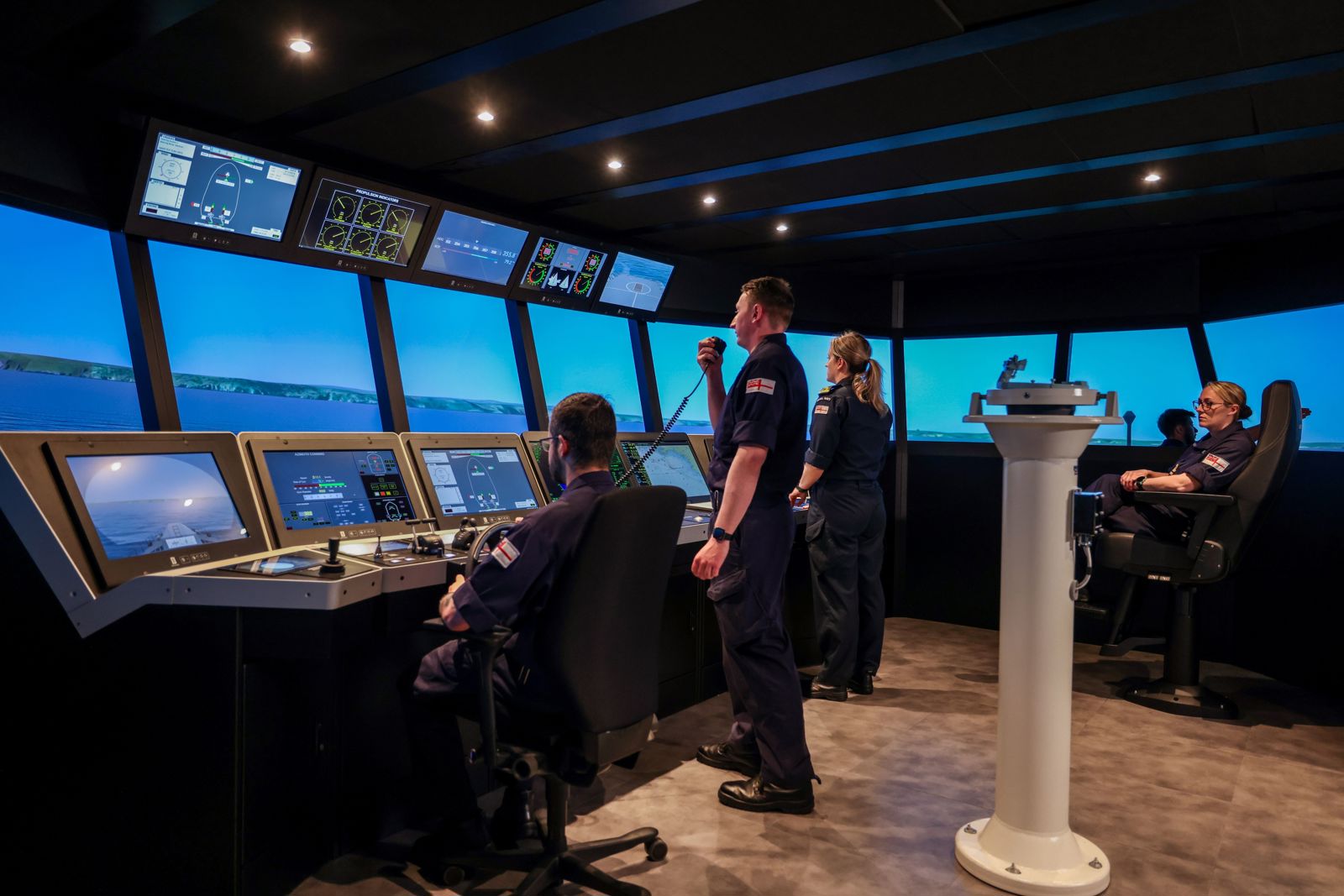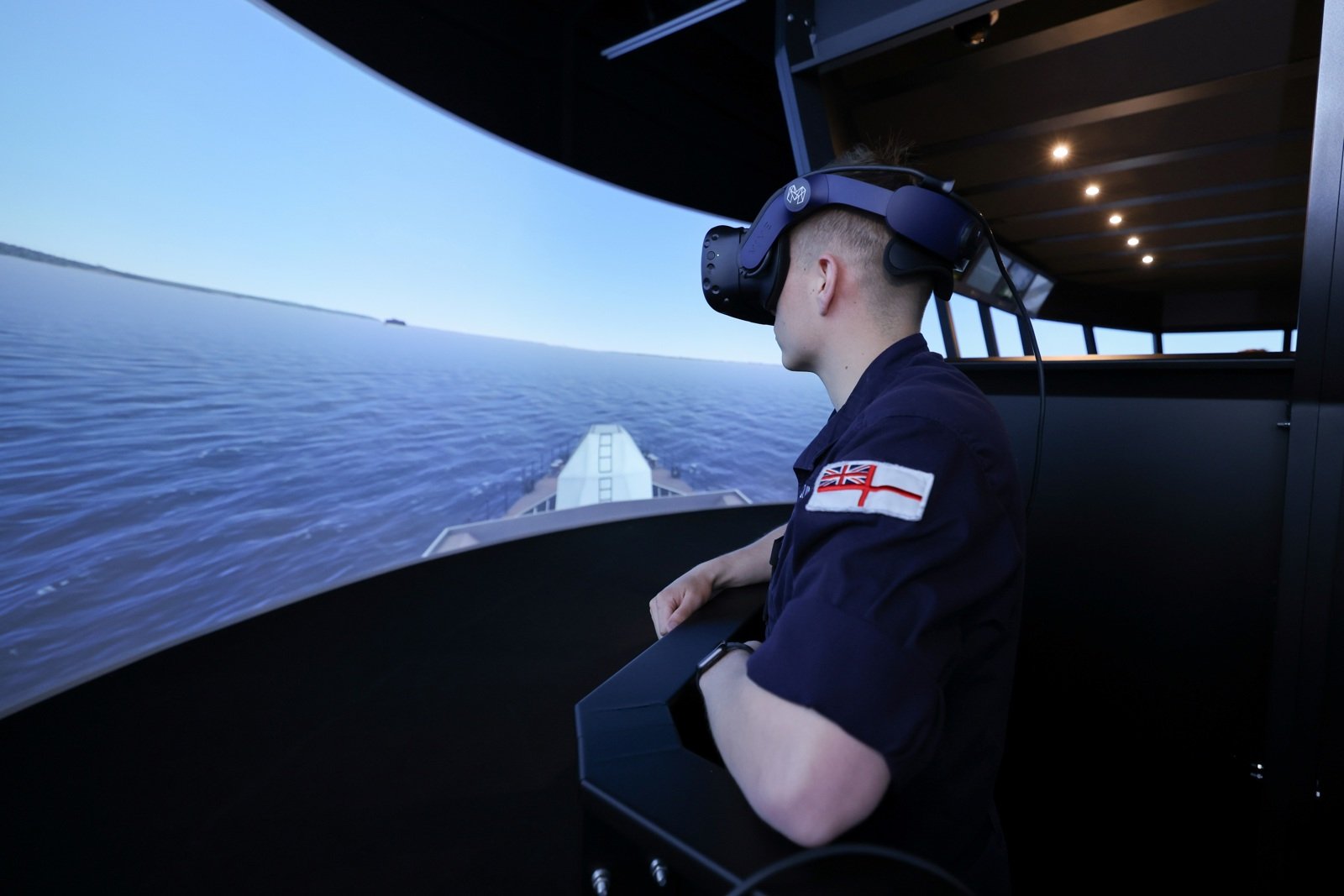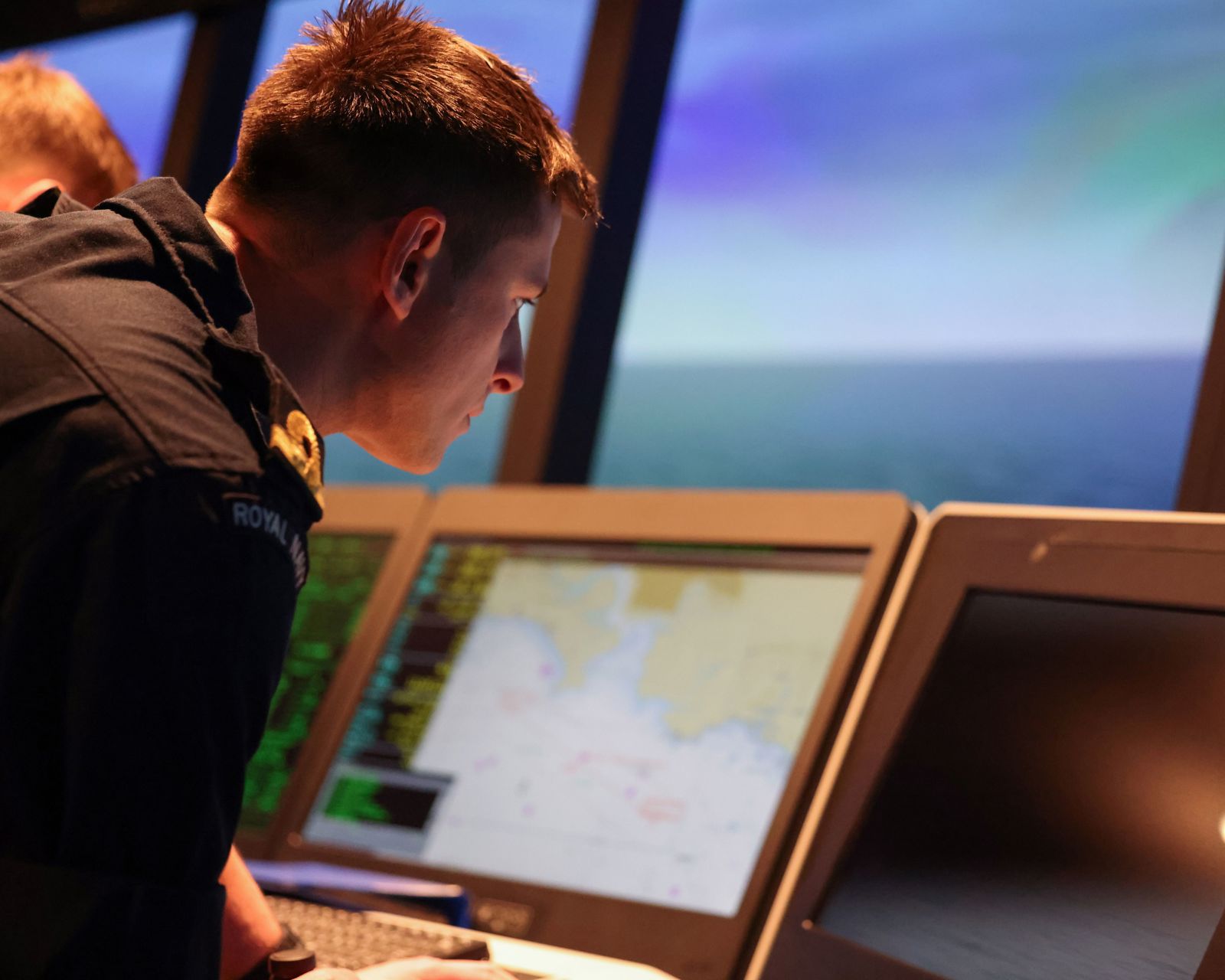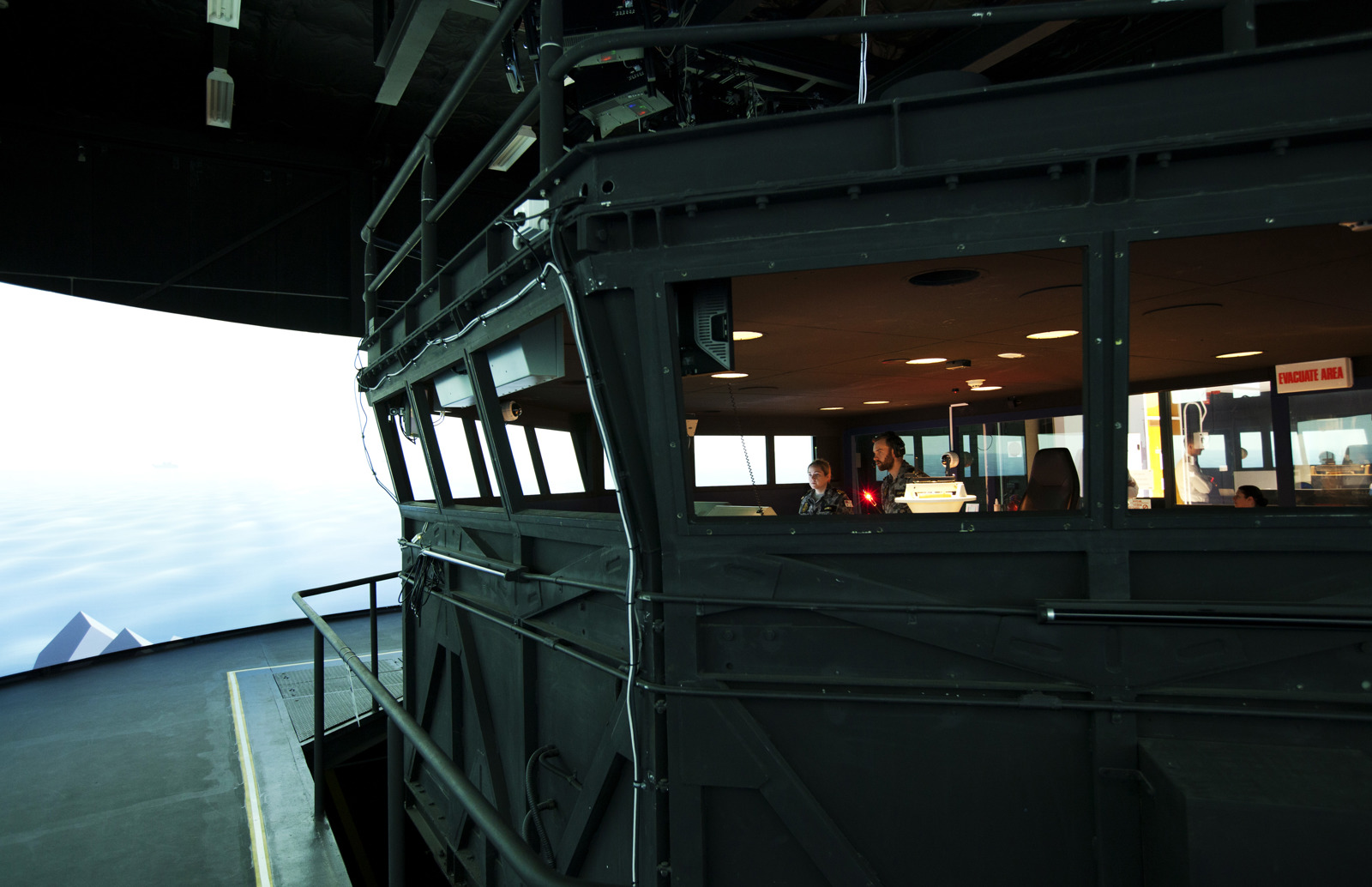
A modern, flexible learning experience
State-of-the-art simulators offer immersive training across a range of operations – from navigation to mission planning – tailored to help crews rehearse and refine tactics and perform under pressure.
-
Text:Global Marketing and Communication
Photo:©Kongsberg Maritime / Image: UK Ministry of Defence/Crown copyright 2024
-
Craig TaylorSenior Manager PR & Communications
In today’s fast-moving commercial environment, it’s important to offer quality products and solutions that move with the times. Kongsberg Maritime delivers excellence that is based on close collaboration.
Realism meets readiness
Kongsberg Maritime’s K-Sim simulators are designed to deliver immersive, high-fidelity training across a wide spectrum of naval operations. From bridge navigation and engine room management to high-speed, tactical boat handling and mission planning, K-Sim offers a comprehensive suite of solutions tailored to meet the exacting standards of naval and coastguard customers.
“Our goal is to provide training environments that are as close to reality as possible,” says Espen Liset, Kongsberg Maritime’s EVP Digital and Simulation. “With K-Sim, we’re not just simulating operations, we’re enabling crews to rehearse missions, refine tactics and build the confidence needed to perform under pressure.”
One of the key strengths of Kongsberg Maritime lies in its ability to integrate simulation technologies into broader ship systems. The company’s naval scope is growing – and integration is the key.
The K-Sim Navigation system, for example, can be seamlessly connected with K-Sim Engine and K-Sim Safety modules, allowing for full-crew training that mirrors real-world vessel operations. This interoperability is further enhanced through support for Distributed Interactive Simulation and High-Level Architecture standards, enabling joint exercises with other platforms, including aircraft and land-based units.
“Integration is at the heart of everything we do,” Espen explains. “Naval operations are inherently complex and multi-dimensional. Our simulators reflect that reality, allowing teams to train together across departments and disciplines.”
K-Sim’s flexibility is another standout feature. Whether it’s a desktop setup for individual learning or a full mission bridge with six degrees of motion and immersive visuals, the system can be configured to meet any training requirement.
For example, the Royal Norwegian Navy uses a custom 1:1 simulator replicating the tactical bridge of its Skjold-class corvette – one of the fastest warships in the world. This allows bridge teams to train under high-speed conditions that would be difficult, if not impossible, to replicate safely in live exercises.
Similarly, the Singapore Police Coast Guard has deployed four K-Sim Tactical Boat Handling Simulators to support fast interception and high-speed manoeuvring exercises. These simulators replicate different boat types and integrate weapons capabilities, providing a complete tactical training environment.

Image: UK Ministry of Defence/Crown copyright 2024

Image: UK Ministry of Defence/Crown copyright 2024

Image: UK Ministry of Defence/Crown copyright 2024
Mission-ready features
K-Sim Navigation includes a vast library of geographic exercise areas, customisable operational zones and support for Additional Military Layers. Trainees can practise everything from replenishment at sea and search and rescue to anti-piracy operations and port security. The system’s advanced physics engine ensures realistic vessel behaviour, including line tensioning, collision detection and dynamic environmental modelling.
Meanwhile, K-Sim Engine offers dynamic, real-time simulations of propulsion systems, including customised replicas of naval vessel engine rooms. The Royal Australian Navy, for instance, benefits from a simulator replicating the CODAG-E engine in its Canberra-class Landing Helicopter Dock vessels, allowing engineers to train on integrated automation systems and emergency procedures with unparalleled realism.
Cloud-based flexibility
Recognising the need for flexible, remote training, Kongsberg Maritime also offers cloud-based access through K-Sim Connect. This platform enables instructors to assign exercises and monitor progress from anywhere, while students can train independently on personal devices. It’s a scalable, cost-effective solution that supports continuous learning and operational preparedness.
As naval operations become increasingly digitised and data-driven, simulation technologies will play an even greater role in shaping both crew competence and mission success.
Kongsberg Maritime is committed to staying ahead of the curve, continuously evolving its simulator portfolio to meet emerging threats and operational demands.
“Our simulators are more than training tools, they’re strategic assets,” Espen concludes. “They help naval forces prepare for the unknown, respond to the unexpected and operate with confidence in any scenario.”